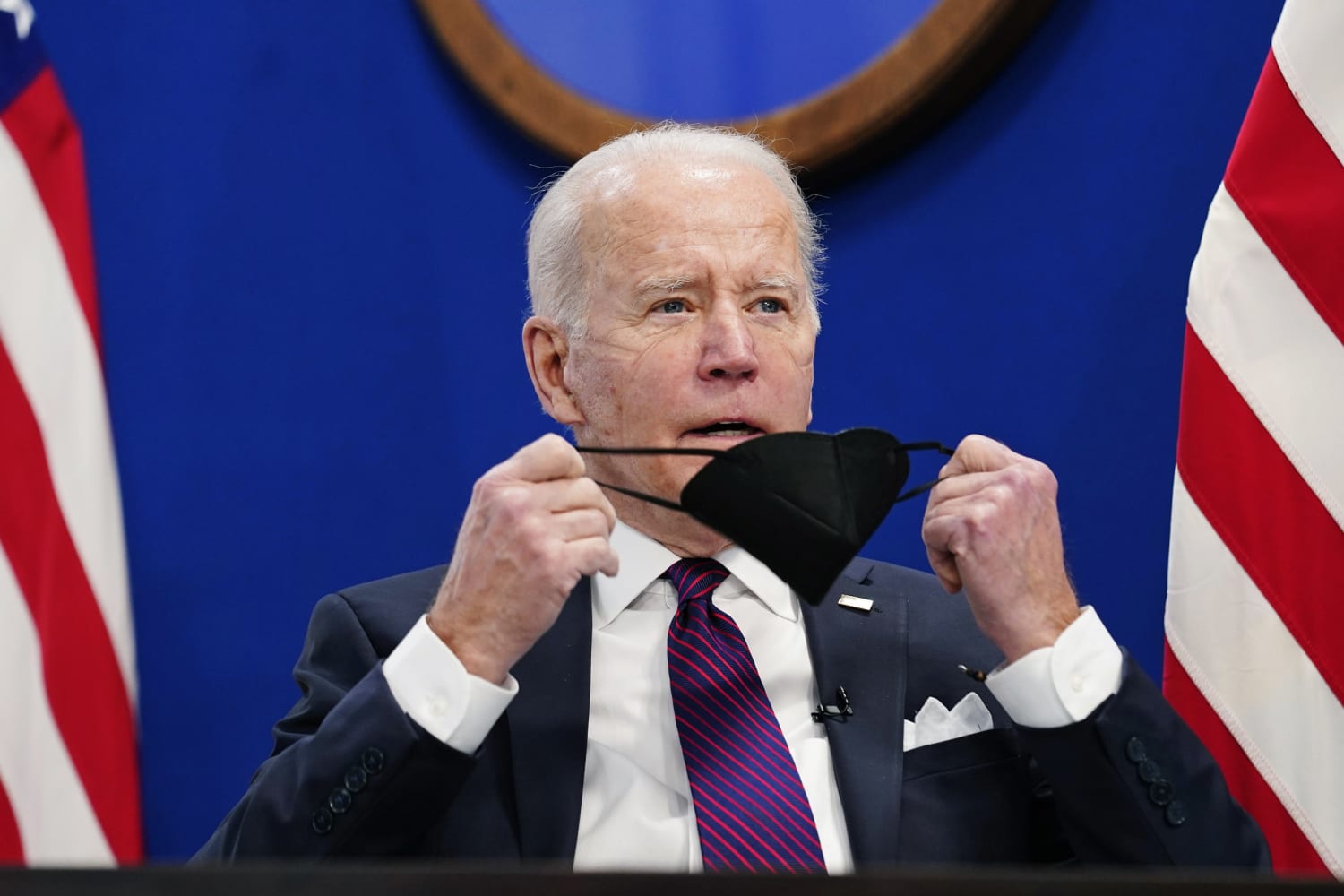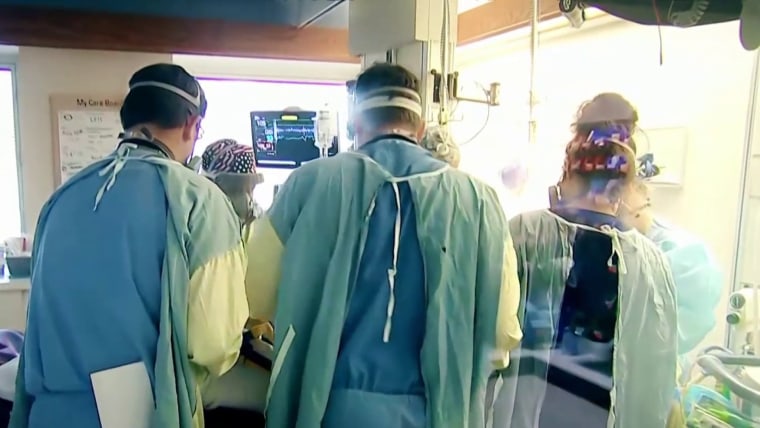WASHINGTON — The White House will roll out details Wednesday of its strategy for the next phase of handling the pandemic: a roadmap for living with Covid-19.
President Joe Biden outlined a “test to treat” approach in his State of the Union address before Congress Tuesday night, which involves expediting treatments, such as Paxlovid, by allowing pharmacists to issue prescriptions on the spot for people who test positive.
Another goal is strengthening the Center for Disease Control and Prevention’s data collection surveillance, a White House official said. There have also been discussions about whether to create a more permanent role to manage pandemic preparedness for the long term, according to two individuals familiar with the plan.
Biden’s new plan will include a significant amount of money to address long Covid as well as bereavement for children who’ve lost parents to the virus and vice versa, according to a person briefed on it. The strategy will also involve the Occupational Safety and Health Administration and other agencies working together to put better ventilation requirements into all buildings including offices and schools, the individual said.
The U.S. is transitioning to a new phase of the Covid pandemic, and some Americans are eager to return to life as normal. Yet with a vaccination rate of 63 percent, health experts say Covid is here to stay. The new approach comes after the White House has been listening to experts about what the “new normal” should be.
On Tuesday, Biden extended a 100 percent reimbursement of the Covid emergency response cost to states, tribes and territories, a sign that his administration sees a continued need for federal resources even as infection numbers decline across the country. Many states have used the funds to surge testing capacity.
The president’s Covid response team has been tight-lipped about other details. Health experts say there are some obvious things the federal government can do to create a more permanent infrastructure around detecting and treating Covid for the long run.
“It’s not rocket science to figure out what, what is needed,” said Dr. Steven Phillips, the vice president of science and strategy for Covid Collaborative, a coalition of experts in health, education and economics. Phillips in a wide-ranging interview outlined how the country can return to pre-pandemic life and what it would look like, with plentiful access to rapid testing and protecting the vulnerable. “Omicron is going to be with us for quite a long time. That’s endemicity,” he said.
Among the experts the White House consulted is Dr. Peter Hotez, co-director of the Center for Vaccine Development at Texas Children’s Hospital, who said that “there needs to be a communication plan in place for not if but when the numbers start going back up.”
“We’ve had big waves in the South, and this summer I’m expecting another wave,” he added. “And, if not, we should expect another wave in the winter. I don’t think we’re done with this, so what’s the anticipatory guidance to let the American people know, don’t be surprised if we have to go back into the red?”
The federal government can also create more guarantees for rapid test manufacturers, said Lindsey Dawson, a director at the Kaiser Family Foundation.
Over the winter holidays and as the omicron variant surged, the U.S. was caught without adequate testing supplies. Reassuring manufacturers that the government will continue to bulk purchase tests is a significant step. Recently, the government solicited advice from manufacturers on what it can do to encourage them to quickly ramp up supply when needed, said Dawson.
Once the supply issue is settled, much of the federal government’s role will fall to the CDC to issue a new handbook for living with Covid, including how and when to use at-home test kits and helping to pave the way for quick delivery of therapeutics to the most vulnerable populations, said Phillips.
“We need to get much more specific about the actual protocols, the actual indications for the use of these rapid tests in a public health valuable way. And I think, frankly, we have a way to go there, and I’m looking for the CDC and other scientific bodies to provide some guidance for Americans,” said Dawson.
Source: | This article originally belongs to Nbcnews.com











